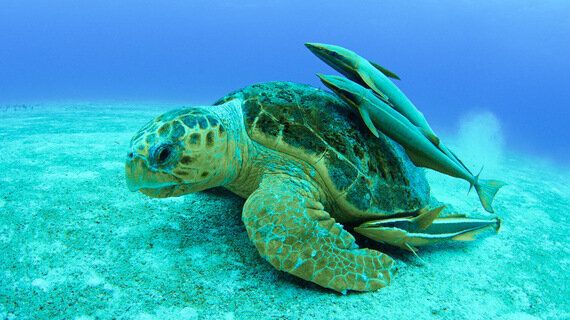OK, I admit it. Being a media creator, I can be pretty cynical. I sometimes feel like we're in dial-a-holiday cycle of causes and Earth Day might just be the "Hallmark holiday" of the environment.
I know that we want environmental conservation to be mainstream, but do question how much we water down the message to make it palatable to the largest possible audience controlled by media giants. This results in some mixed media messages on Earth Day. Take for example, Disney's release of Monkey Kingdom this week.
It's the eighth in their series of "documentaries" featuring (usually) mother-infant pairs of creatures. This year the species of choice is the toque monkey of Sri Lanka, although other installments have featured grizzly bears, flamingoes and chimpanzees.
I do see the upside of these films. They are always beautifully shot, they have personable narrators, and most importantly the movies are family friendly and present kids with loads of information about the species to inspire future generations of conservation. Mostly, I am troubled by the extreme anthropomorphism: the way filmmakers always endow the creatures with human characteristics or otherwise equate the animal's experiences with human struggles.
But I shouldn't be surprised. When I consider most media stories about wildlife, it usually ends up being about us. In the most audacious example, the U.S. broadcaster Animal Planet brands itself as "Surprisingly Human." Then of course there are the annual offerings during Shark Week and others about how dangerous wildlife is to people.
Even when it should be about the animals, during rescues, etc. it's about us and how it makes us feel. Are we really that narcissistic that we can't relate to a film that does not contain humans, or humanesque characters?
One of the reasons I worry about this so much is that our human narcissism is really dangerous for animals. A popular activity in Vancouver's Stanley Park is for tourists to take photos of themselves feeding the raccoons. As a result, raccoons eat a lot of unhealthy things and learn to expect food from people. If raccoons get aggressive in pursuit of treats, this behaviour could cost them their lives.
Additionally, the feeding of raccoons in the park means that there are more raccoons than the park ecosystem can naturally sustain. This puts threatened species, like the Pacific Great Blue Herons, at an even greater risk as too many raccoons target eggs in the heron nests. Our need to feel good is achieved at the expense of wildlife. (The parks board strongly discourages this behaviour. Offenders can face fines of up to $5,000.)
So we endlessly debated the role of people as we set out to make our first natural history series, Bahama Blue. In all our pitches, we made it clear that while humans might occasionally appear on camera in their jobs as researchers, or sometimes to just give size perspective, we would not shoot experts speaking directly to camera. We wanted the films to be focused more on the animals and less on the humans. It was an old-school approach based on my childhood diet of Mutual of Omaha's Wildlife Kingdom.
The results are pleasing. We've managed to put wildlife-centric stories back into natural history films. Of course, I'm not saying we should never make animal rescue films, or tell stories about animal-human interactions, but it's nice to have an alternative.
We've just released the title sequence to give viewers a sneak peek at the project set to premiere here in Canada on Love Nature May 6.
Bahama Blue Title Sequence from Parallax Film on Vimeo.
Back in 2012, the Canadian Nature Survey commissioned by the Canadian federal, provincial and territorial governments revealed that 63 per cent of Canadians -- nearly 17 million people -- got their information about nature from watching visual media. This tells me that Canadians love stories about nature told this way --but are we satisfied with the types of stories we are being shown? How do we make them better? Earth Day is a perfect time to think about it.
